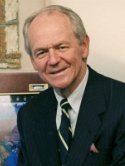Altered patterns of RB expression define groups of soft tissue sarcoma patients with distinct biological and clinical behavior Journal Article
| Authors: | Polsky, D.; Mastorides, M.; Kim, D.; Dudas, M.; Leon, L.; Leung, D.; Woodruff, J. M.; Brennan, M. F.; Osman, I.; Cordon-Cardo, C. |
| Article Title: | Altered patterns of RB expression define groups of soft tissue sarcoma patients with distinct biological and clinical behavior |
| Abstract: | Background: Function of the retinoblastoma tumor suppressor protein (pRB) may be compromised at a genetic level by gene loss or mutation or at a post-translational level by hyperphosphorylation. In this study, we examined adult soft tissue sarcomas (ASTS) to determine if alterations of pRB were associated with distinct patterns of pRB expression and clinical outcome. Design: We investigated 86 ASTS patients using monoclonal antibodies that distinguish between hyperphosphorylated and underphosphorylated pRB products. We also used microsatellite analysis to investigate the genetic status of the RB locus. We correlated pRB alterations with proliferative activity, and with clinicopathological outcomes. Results: Altered patterns of pRB expression are common in ASTS occurring in 84% of cases, and it is significantly associated with proliferative activity (p<0.001). Patients whose tumors either lack expression of pRB, or express hyperphosphorylated forms of pRB, have poor survivals compared to patients whose tumors exhibit a normal, underphosphorylated pattern of pRB expression (p=0.03). In addition, 63% of cases lacking expression of pRB showed loss-of-heterozygosity at the locus. Conclusions: Inactivation of pRB is common in adult STS, which may be due to either gene loss or post-translational modification, namely hyperphosphorylation. Both mechanisms are associated with tumor cell proliferation and poor survival. |
| Keywords: | survival; adult; cancer survival; controlled study; human tissue; protein expression; protein phosphorylation; treatment outcome; survival rate; gene mutation; major clinical study; genetics; histopathology; mortality; prospective study; prospective studies; cell proliferation; metabolism; tumor markers, biological; gene locus; retinoblastoma; pathology; phosphorylation; microsatellite dna; tumor marker; monoclonal antibody; sarcoma; enzyme immunoassay; gene expression regulation; immunoenzyme techniques; gene expression regulation, neoplastic; correlation analysis; statistical significance; protein processing; fibrosarcoma; cancer cell; soft tissue sarcoma; gene loss; heterozygosity loss; leiomyosarcoma; malignant fibrous histiocytoma; rhabdomyosarcoma; spindle cell sarcoma; loss of heterozygosity; retinoblastoma protein; protein determination; soft tissue neoplasms; soft tissue tumor; liposarcoma; microsatellite repeats; hyperphosphorylation; immuno-histochemistry |
| Journal Title: | Histology and Histopathology |
| Volume: | 21 |
| Issue: | 7-9 |
| ISSN: | 0213-3911 |
| Publisher: | Thomson Scientific |
| Date Published: | 2006-07-01 |
| Start Page: | 743 |
| End Page: | 752 |
| Language: | English |
| PUBMED: | 16598673 |
| PROVIDER: | scopus |
| DOI/URL: | |
| Notes: | --- - "Cited By (since 1996): 6" - "Export Date: 4 June 2012" - "CODEN: HIHIE" - "Source: Scopus" |
Citation Impact
MSK Authors
Related MSK Work




